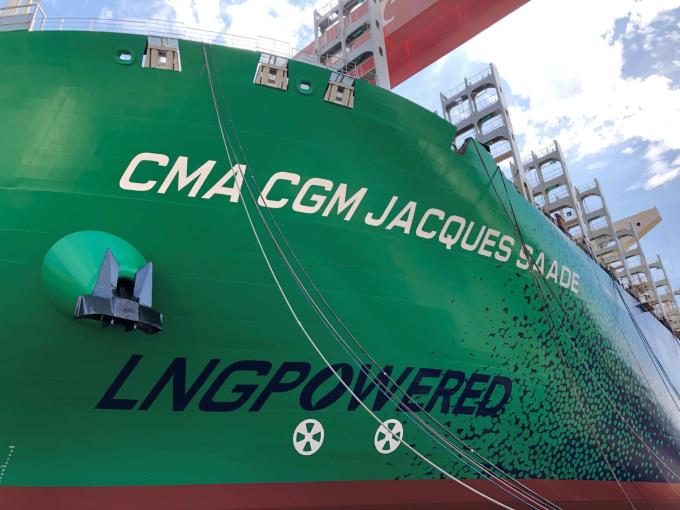NOCC adds third ‘ammonia-ready’ PCTC newbuild orderbook
Norwegian Car Carriers (NOCC) has added a third ‘ammonia-ready’ 7,000ceu LNG-powered ship to its two-vessel, ...
TFII: SOLID AS USUALMAERSK: WEAKENINGF: FALLING OFF A CLIFFAAPL: 'BOTTLENECK IN MAINLAND CHINA'AAPL: CHINA TRENDSDHL: GROWTH CAPEXR: ANOTHER SOLID DELIVERYMFT: HERE COMES THE FALLDSV: LOOK AT SCHENKER PERFORMANCEUPS: A WAVE OF DOWNGRADES DSV: BARGAIN BINKNX: EARNINGS OUTODFL: RISING AND FALLING AND THEN RISING
TFII: SOLID AS USUALMAERSK: WEAKENINGF: FALLING OFF A CLIFFAAPL: 'BOTTLENECK IN MAINLAND CHINA'AAPL: CHINA TRENDSDHL: GROWTH CAPEXR: ANOTHER SOLID DELIVERYMFT: HERE COMES THE FALLDSV: LOOK AT SCHENKER PERFORMANCEUPS: A WAVE OF DOWNGRADES DSV: BARGAIN BINKNX: EARNINGS OUTODFL: RISING AND FALLING AND THEN RISING

Despite an explosion of orders, a mounting body of research has revealed that switching to LNG-powered ships might be worse than doing nothing to cut emissions.
And the news has ignited a fierce debate, likely to dominate the IMO’s June MEPC78.
Some 57% of newbuild orders in Q1 were for LNG-powered ships, but the fuel appears to be falling into disfavour.
Countries are now proposing that GWP20 – the indicator of greenhouse emissions’ global warming potential over a span of 20 years – be taken into consideration, as well as GWP100 –for 100 years.
The distinction is important, because newly emitted atmospheric methane (CH4) from LNG begins to degrade into CO2 after 20 years – but not before it has incurred 86 times as much global warming effect as the equivalent volume of CO2.
A study by the International Council on Clean Transportation (ICCT), submitted as evidence by the Solomon Islands, Pacific Environment and Inuit Circumpolar Council, shows CO2 emission savings of as much as 0.5 grams per gram of fuel burned are available with LNG, versus HFO.
However, according to its emissions profile of CO2, “equivalent” greenhouse gases over a 20-year period (CO2e20), this gain appears to be completely lost by an increase of CO2e per gram of as much as 3.771 grams, in switching from HFO to LNG propulsion. On a 100-year basis, (CO2e100), this increase amounts to as much as 1.229 grams per gram of fuel burned.
LNG’s well-to-tank CO2 emissions are slightly higher than those of HFO, and its well-to-tank methane emissions are almost quadrupled, according to the study. Land-based LNG infrastructure is known to leak, which could account for some of these figures.
“Comparing the three metrics [CO2, CO2e20 and CO2e100], one can see that focusing solely on CO2, ignoring other climate pollutants, can significantly underestimate climate pollution from maritime transport,” the study’s authors wrote.
“We suggest policymakers consider not only CO2e100, but also CO2e20 for policies intended to be aligned with the Paris Agreement.”
However, interest group Sea-LNG recently decried “sensationalist claims” by LNG’s opponents, citing the results of a study by Sphera. It compares, on a well-to-wake basis, 0.5% sulphur fuel oil (VLSFO) with LNG, identifying a 23% decrease in CO2e per kWh of engine output (the study does not appear to take CO2e20 into account).
The Sphera study does measure well-to-tank emissions however, and finds that for HFO, the figure is 14.1g CO2e per megajoule; for VLSFO0.5 it is 14g CO2e/MJ; for MGO0.1, it is 14.9g; and for LNG, the figure is somewhat higher at 17.7g.
Sea-LNG chairman Peter Keller said methane slip represented “an overused argument for those wishing to justify inaction” and added that by 2030, he believes, it will have been “virtually eliminated”.
Sea-LNG also pointed out that it may in due course be possible to switch to bio-LNG – a close-to-carbon-neutral drop in replacement for LNG, and a recourse for owners already saddled with fleets of LNG-fuelled ships.
Comment on this article